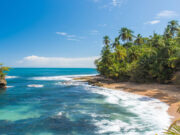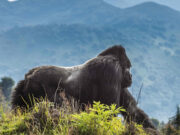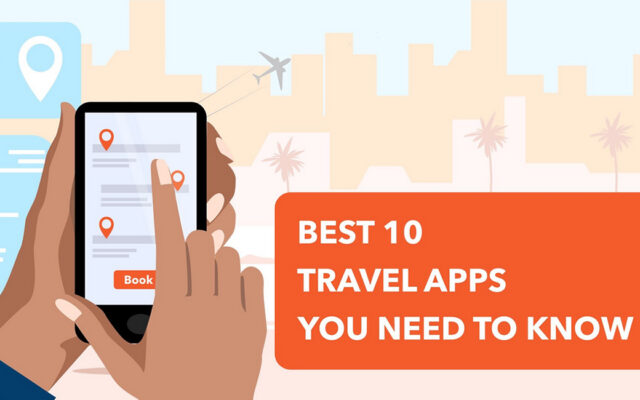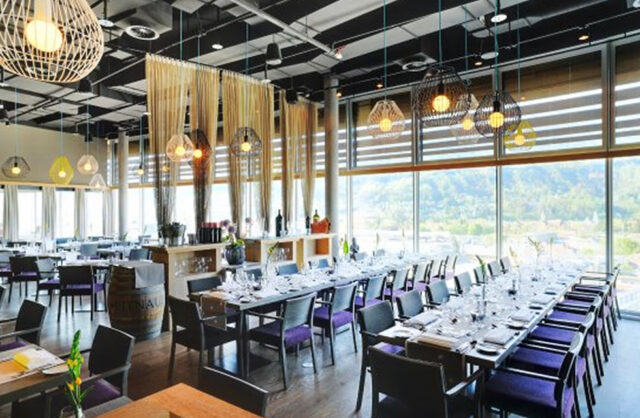
Created by Kevin Dimetres
Its crumbling ruins are so remote that time itself considered leaving them behind. Its mystical fortresses tower over rice paddies and rural villages. The silhouettes of their petrified remains reminds onlookers of the great empire from long ago. It is Mrauk U, the enchanting capital of the old Arakan kingdom, home to some of the most unique archaeological ruins on earth.
To travel up the Kaladan River in Myanmar’s western delta region is to journey back in time; simple homes are scattered across a worn countryside freshly tilled by water buffalo and wooden oxcarts. Conical straw hats and cylindrical longyi skirts with sandals are the apparel of choice. Life moves slowly as globalization has yet to take hold.

The temples of Mrauk U emerge from the pastoral hillside seemingly out of nowhere. Colossal structures topped with bell-shaped domes and spiraling stupas engulf the landscape like celestial palaces fallen from heaven. The Arakan architecture of the temples resembles a Frankenstein-like fusion of martial fortifications and royal mausoleums. Constructed as tributes to the religious and political zeal of the former Arakan kings, the ruins were the last remnants of a once mighty empire forged during the age of exploration.

The Arakan kingdom dominated trade throughout the Bay of Bengal during the 15th-18th centuries, controlling the lands between the Ganges River to the east and the Ayeyarwady River to the west. Following the kingdom’s collapse after the First Anglo-Burmese War, the trading center was seized by the British and moved to the coastal ports in Sittwe. Forgotten by outsiders, Mrauk U became something of a ghost town and its remaining inhabitants adapted to an agrarian lifestyle alongside the crumbling ruins.
I now find myself in this far corner of the world on an expedition to explore some of the most remote archeological ruins on earth. Wandering among the ruins, the rhythms of everyday life have an alluring vitality unlike any place else.
A passing farmer approaches me near the oversized Hershey Kiss stupas encircling a Buddhist shrine called the Ratanabon Paya, which translates to “pile of treasures.” Grazing on the thin patches of grass surrounding the temple, his herd of brown cows navigates through the ruins as if the spiraling stupas had grown organically from the soil beneath our feet. Thrilled with the opportunity to practice his English, the farmer introduces himself as Kyin.


Mrauk U may be a destination for travelers, but for locals like Kyin, this is home. Using a flurry of hand gestures to complement his heavy Myanmar accent, he points ahead to the Andawthein Temple while explaining that a tooth relic of the Buddha is enclosed inside the lofty central pagoda.
I scan my surroundings for a more formal individual to guide me to the temple before realizing the obvious: tour guides don’t exist here. Outside of a five dollar entrance fee collected by an elderly man sitting alone outside of the Shittaung Temple, travelers are on their own.

I am struck by the stark contrast between Andawthein Temple’s elegant layout and the brutish design of the neighboring Htukkanthein Temple. I make my way toward this next temple, which resembles something like a castle and has the stylishness of a bomb shelter.
Rising from the center of the Htukkanthein Temple as if it were an imperial crown, a massive bell-shaped dome dwarfs the neighboring shanty-homes constructed near the ruins. Exploring its dimly lit interior, I follow its spiraling, dungeon-like corridor adorned with carved statues of the Buddha to a deserted meditation chamber. Not another traveler is in sight.


On a beaten swath of grass outside of the temple, barefoot children play soccer with sticks for goal posts. Dressed in million dollar smiles and brimming with youthful ambition to be the country’s next Suk Bahadur, they ask me who I am and where I’m from. I tell them and they respond with gleeful chants of “Obamaland!”
Laughing with the young soccer enthusiasts, I continue traversing the ruins. I find a quiet pathway that connects Mrauk U with the distant villages hidden behind the thick foliage of the Rakhine hillside. Without another thought, I start on the path.
Before long, I see the moss-covered Laungbanpyauk pagoda rising above the trees as if growing from a misplaced seed that had been dropped from the pocket of the Buddha himself. The pagoda would appear oversized and out-of-place anywhere else, but the unique juxtaposition of medieval ruins and agrarian lifestyles seems perfectly normal here.
A farmer shouts “Mingalaba” (Hello), to me as I walk by. He is harvesting rice from paddy fields planted around the Laungbanpyauk pagoda. As I wave back, he presents me with a trademark Myanmar smile from beneath the shade of his broad, cone-shaped hat.

Farther down a dirt road, past the endless fields of checkerboard rice paddies, the otherworldly Kothaung Temple strikes a portentous pose amidst innocent farming enclosures and cattle pastures. A visual assault of wonder and intimidation, the temple displays five rows of spiral stupas surrounding it like nuclear missiles positioned for launch. Often referred to as the shrine of 90,000 Buddhas, the spiritual fortress resembles a post-apocalyptic Stone Age stronghold more appropriately designed for the set of a Mad Max movie than the Myanmar countryside.


A lone Buddhist monk clutches a large alms bowl to his chest as he passes by the Kothaung Temple. He prompts me to conjure my best Myanmar accent in an attempt to continue a conversation. His eyes light up at my clumsy attempt to speak the native language, chuckling and muttering comments I couldn’t decipher. I bow to him as he moves along and he bursts into a comical fit of more laughter, stammering the words “Goodbye, friend.”
While I head back toward the town center, the sky turns into a frightening shade of dark grey and midnight blue. Myanmar’s summer monsoons are notorious for their flash floods, so I seek shelter anywhere possible.
Sneaking through an unlocked gate in the Lemyethna Temple, I escape just in time as the clouds release a torrent of rain. Stepping lightly into the temple, I find myself accompanied by four large Buddha statues each facing outwards in a cardinal direction, their backs around a central pillar. The shadowy crypt-like sanctuary allows just enough natural light to illuminate each statue. A window looks out over a lush hillside dotted with rural villages and spiral-shaped Buddhist shrines penetrating the horizon.

I’m quickly joined by five local men also seeking shelter from the pouring rain. They erupt into laughter when they find a like-minded foreign traveler hiding in the dark. They had been playing chinlone, a popular Myanmar game similar to hacky sack, when the rain had started. Now, with the animated persuasion of a Price Is Right audience, they insist that I participate in their next game once the rain lets up.
As soon as the storm passes, we form a circle outside the Lemyethna Temple gates. We kick the woven rattan ball back and forth with our bare feet, displaying as much artistic flair as possible to keep the ball from hitting the ground. I couldn’t quite grasp the scoring system, but no one seemed to mind; much like touring the temples of Mrauk U, a game of chinlone is more about the journey than the destination.
Hoping to catch a sunset view from the elusive Hariduang Paya, I embark up an unmarked hillside stairway hidden behind swaths of tree branches near the ruins of the former palace. Notable for its panoramic view overlooking Mrauk U from its hilltop setting, the glimmering golden stupa appears like the All-seeing Eye of Providence from the ground below.


A crew of edgy, young teenagers dressed in western attire sits near the stupa, blasting music from their smartphones while engaging in animated conversation. Curious, I walk up to the group and unintentionally startle them in what they thought was their secret hideout. I point to their smartphones and smile while nodding my head to the music, a gesture of approval which piques their curiosity about my taste for Myanmar pop-culture.
“Arakan music,” boasted my new friend, Ko, a charismatic kid wearing a backwards hat and polo shirt. “My favorite song… You like?”
Nodding, I pull out my smartphone and inquire about their taste in foreign music, particularly hip-hop and reggae. They nod collectively and I play a few tracks from Wu-Tang and Bob Marley, the latter of which brings jubilant smiles and head nods to the members of the group. As we jam to Bob Marley’s “Jammin’,” two novice Buddhist monks appear at the top of the staircase, laughing at our shenanigans.
Mrauk U receives a small fraction of the attention drawn by the more famous Southeast Asian ruins at Angkor Wat and Bagan, and perhaps it is better that way. Unlike theme-park styled archaeological tourism, which tends to convert humanity’s historical past into cultural caricatures for hire, Mrauk U is the rare phenomenon among ancient ruins: it is pure. Mrauk U presents the opportunity for inspired travelers to connect with the local culture. It provides a glimpse into the past and a living connection with the present. I came for the medieval ruins, but I left with priceless memories of the local people. Ancient monuments may make great backdrops for selfies and social media posts; however monuments don’t speak back; the true treasures are the connections with the local people.

All images by Kevin Dimetres














 Caption: The South End Kitchen and Cafe
Caption: The South End Kitchen and Cafe




















